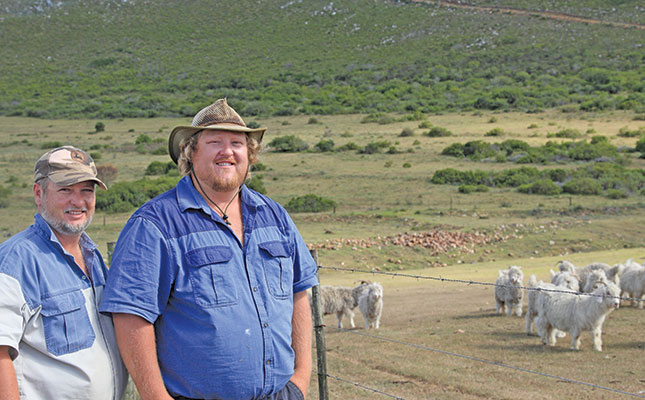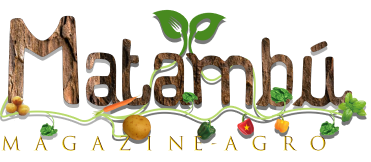[ad_1]
While most Angora producers in the Southern Cape have given up farming these animals, brothers Jasper and Leon van der Westhuizen have achieved distinctive outcomes. They spoke to Glenneis Kriel concerning the native environmental circumstances and their administration methods.
Photo: Glenneis Kriel
Since they began farming Angora goats at Amantis Landgoed in 2014, Jasper and Leon van der Westhuizen have damaged the world file for the worth of a bale of grownup mohair a number of instances, ending 2021 with a bale that fetched an astonishing R620/kg.
Their 400ha farm close to Mossel Bay produces a mean clip of 26mm, which is the trade customary for younger goats.
Jasper says that Angora goats are usually not a preferred selection with farmers in the Southern Cape, as they’re tough to handle, typically escaping from their camps. Coming from the Karoo, nonetheless, he and Leon had been used to farming Angoras, and see these goats as the way forward for livestock manufacturing.
“The demand for renewable and natural fibres is increasing. This is especially the case with fibres like ours, which are produced in an environmentally and ethically responsible manner, as underlined by Responsible Mohair Standard certification. Mohair is also highly versatile, with textile and industrial applications,” he says.

Good genetics
The Van der Westhuizens ascribe their success with Angora goats to good genetics, sound administration practices, and a beneficial manufacturing surroundings.
“When we started farming Angoras, we built the herd on a solid foundation by buying the best genetics we could afford from Fred and Billy Colborne, stud breeders in Willowmore. It’s tempting to save money by buying cheap animals, but this will negatively affect your bottom line in the long run, as it can take years to correct problems through selective breeding,” says Jasper.
Today, the brothers haven’t any want to purchase in new ewes, and easily change one or two rams yearly, relying on demand. “We make use of natural breeding techniques, with one ram used on every 30 ewes,” says Leon.
The 220 ewes they purchased from the Colbornes averaged between six and 7 years of age which, in the Karoo, is taken into account previous an Angora goat’s prime. Jasper explains that goats usually begin to lose their tooth from this age, ensuing in dietary issues that negatively have an effect on their well being, replica and mohair high quality.
The softer veld grasses of the Southern Cape, nonetheless, are a lot gentler on the goats’ tooth than Karoo bushes, and this vastly will increase the longevity of those animals. The result’s that a few of their unique ewes are nonetheless going sturdy in their herd, even with out tooth. On the draw back, the veld grasses of this space are usually not as nutritious as Karoo bushes, so the goats should be fed every day to keep up their situation, which considerably will increase manufacturing prices.
“We buy all our feed from a reputable source, De Heus, with whom we’ve built a relationship over the years, and try to plant barley when there’s sufficient soil moisture. Unfortunately, this has been more the exception than the rule, as our farm has been subjected to drought since we bought it in 2014,” says Jasper.
Leon wish to plant lucerne as soon as they’ve damaged out of the dry cycle, at the least in the camps used for weaning. “The drought and rising input costs are threatening our sustainability and make mistakes very costly. For now, it’s better to stick with what we know than to try out new things,” he says.
Feed administration
The dietary plan for the goats has been designed by a feed specialist and is regularly adjusted in accordance with the animals’ situation, their reproductive cycle, weather conditions, and the situation and availability of veld and planted pastures. Liver examinations are additionally completed on useless animals to establish mineral and vitamin deficiencies.
“Feeding is one of the cornerstones of livestock production, as it directly influences the quality of fibre, offspring and reproduction. It doesn’t pay to have the best genetics if you’re not feeding your animals well,” says Jasper.
The ewes are given high-protein rations for 2 months, from simply after weaning till the mating season begins, to make sure that they’re in optimum situation when positioned with the rams. Once they’ve conceived, they obtain high-energy rations for good foetus growth and to stop abortions, low birthweights and poor lactation.
The ewes are additionally given premixed multivitamins and minerals, in addition to phosphate, in their feed and licks to stop dietary deficiencies.
“I prefer licks over products mixed into the feed, as the intake of weak animals can be negatively affected by competition at feeding troughs. Intake is restricted when a lick is used, which helps to equalise intake among the animals,” says Leon.
Angora goats can tolerate some warmth stress, though it outcomes in decrease feed and better water consumption. Problems happen when the temperature fluctuates vastly and circumstances are chilly, moist and windy.
“We put the goats in a shed for protection when we expect cold and windy conditions, and supplement their water with glucose to prevent their blood sugar from falling, which can cause them to go into shock and even die,” he says.
He provides that giving the goats a balanced ration all year long and maintaining them in an excellent situation make them much less susceptible to emphasize and ailments.
Production administration
The Van der Westhuizens place the ewes with the rams in April to make sure that the kidding
season begins in direction of the second week of September, after the moist and chilly winter circumstances in the area.
The ewes are dewormed and vaccinated two to a few weeks earlier than the breeding and lambing seasons begin, throughout which era they’re additionally injected with a multivitamin mineral complement.
“Our wet conditions favour the development of intestinal parasites, such as roundworm and hookworm, especially when warm days are followed by very wet conditions. Where Karoo farmers can get away with one anthelmintic treatment a year, we give regular treatments guided by climatic conditions and animal observations,” says Leon.
As a preventative measure, the consuming and feeding troughs are saved clear to stop a build-up of parasites. “This is actually non-negotiable, no matter where you farm,” he stresses.
The brothers’ dosing and vaccination protocols are primarily based on trade recommendation and the newsletters of Dr Mackie Hobson, veterinarian on the South African Mohair Growers’ Association.
The ewes are taken to smaller camps every week earlier than kidding; afterwards, they’re positioned in small pens with their offspring for 2 to a few days, throughout which instances they’re intently noticed in order that issues could be addressed earlier than they get uncontrolled.
The ewes with their offspring, together with different ewes and their children, are then moved to a small camp, the place they keep for at the least 5 days earlier than being reintroduced to the massive camps.
“Most kid mortalities occur during the first two weeks after birth. Time in the pens and smaller camps enables us to intervene quickly when problems arise. It also strengthens the bond between the ewes and their kids, which in turn helps prevent later complications, such as a kid not being able to follow the ewe or a ewe losing its kid,” says Leon.
So far, their ewes have produced solely single children, however this has been below drought circumstances.
“While it’s good to have twins, their management is more difficult, as the ewe needs to be strong enough to raise two kids,” he says.
Shearing
The goats are sheared in August, about three weeks earlier than the lambing season begins, and once more in February, two weeks earlier than the children are weaned.
“We keep the kids with the ewes for about 22 weeks, which is longer than the norm. This, and not shearing during weaning, helps to significantly reduce weaning shock,” says Leon.
It can be simpler to castrate younger rams after they’ve been sheared. The rams are separated from the ewes and saved on lower-quality veld after weaning. “We keep the young rams separate from the older rams during the first year to prevent them from being bullied,” says Jasper.
The goats are shorn in a shed, however there’s not sufficient area for all of them throughout shearing. This signifies that if it rains, they should be moved to stop their hair from getting moist. Fortunately, as a result of comparatively small measurement of the herd, shearing could be accomplished in about 4 days. The goats’ hair is shampooed and conditioned earlier than shearing.
The shearing staff grades the hair, however the Van der Westhuizens spend as much as six weeks thereafter sorting it. “We find that agents go out of their way to get you a good deal when they see you put effort into supplying them with a high-quality product,” says Jasper.
The goats are usually not crutched, because the farm is much from shearing groups. Contrary to expectation, nonetheless, this has not had an enormous affect on the standard or color of their fleece, in accordance with Leon.
The shearers additionally clip the hair on the goats’ heads (‘wigging’), to stop ‘wool blindness’.
“If you leave the hair over their eyes, the goats won’t be able to see where they’re going or where their food and water are.”
None of the animals on the farm is culled, until the standard of its hair begins to deteriorate.
“We’re in the business of mohair production, so we keep animals as long as they produce good-quality hair, regardless of their age or whether they’re good or bad mothers,” says Leon.
Email Leon or Jasper van der Westhuizen at [email protected], or [email protected].
[ad_2]
Source link










